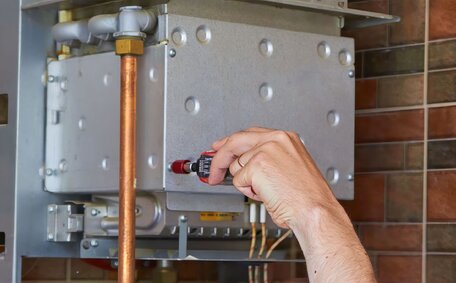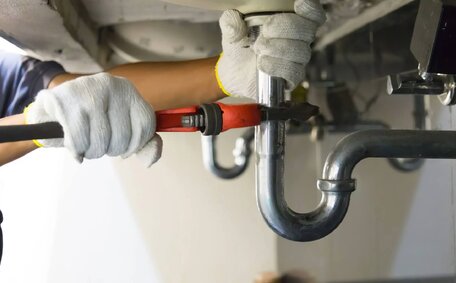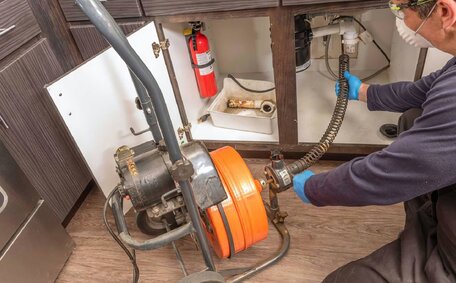Introduction to Pipe Relining
Repair pipes effectively with pipe relining solutions, which provide innovative approaches for mending damaged drainage pipes, including those compromised by tree roots without the need for invasive digging and pipe replacement. It involves inserting a flexible epoxy resin lining into the existing pipe, which then cures to form a smooth, seamless new pipe lining inside the old pipe.
Commonly referred to as Cured-In-Place Pipe (CIPP) lining, this process is a boon to your plumbing system.
An epoxy lining is injected through a small access point and expanded within the original pipe, completely renovating the plumbing with minimal disturbance.
It is minimally invasive, preserving your property by avoiding the need for digging or breaking concrete. Pipe relining is less disruptive than traditional pipe replacement and also offers increased durability.
Pipe relining extends the life of pipes for decades to come.
Pipe relining prevents corrosion while restoring water pressure and flow, enhancing your pipes’ life expectancy.
Pipe relining is extremely cost-effective, saving the expense and hassle you’d normally need to dig up your garden or driveway. Pipe relining is cost-efficient, requiring only a fraction of the full pipe replacement cost, completing in merely one to two days without necessitating re-landscaping.
In this article, we explore what pipe relining really entails, delving into the method and technology behind it. We’ll explain how the pipe relining process works, its suitability for various pipe materials and sizes, costs compared to pipe replacement, expected durability, and how it ultimately ensures the ongoing safety of your drinking water.
How Pipe Relining Works
The drain pipe relining process is meticulously designed to prevent substance leaching, involving the following essential steps:
- Initial CCTV Drain Inspection - A camera inspection is done to assess the condition of the pipes, identify problem areas, and determine the extent damage to see if relining is suitable.
- Drain cleaning - The existing sewer storm water pipes are thoroughly cleaned to remove debris, grease buildup and any intruding tree roots using high-pressure water jetting.
- Resin Preparation - A flexible epoxy resin is prepared and saturated into a felt lining tube along with a catalyst and hardener.
- Tube Insertion - The impregnated lining tube is expertly winched through an access point and inserted into the damaged pipe.
- Inflation & Curing - The tube is inflated with compressed air to expand and press it firmly against the inside old pipe walls. The resin then does its job, curing and hardening over 2-4 hours.
- End Sealing - Once cured, the ends of the lining are trimmed and sealed to the host pipe.
- Service Reinstatement - Any side connections are reinstated and the pipe is CCTV inspected again before returning to service.
A secure epoxy coating forms a smooth lining that seals faults and resists corrosion for up to 100 years, ensuring reliable water flow without invasive replacement.
Pipe relining thwarts future invasions from tree roots, water ingress, and contamination, safeguarding a safe, unbroken drinking water supply.
Pipe Materials Used for Relining
Pipe relining is suitable for an extensive array of pipe materials, covering:
- Cast iron pipes - Common in older homes, susceptible to rust and corrosion.
- Galvanised steel pipes - Prone to buildup and restriction over time.
- Lead pipes require effective sealing to prevent toxic substances from contaminating your drinking water.
- Copper pipes - Durable but still prone to pinhole leaks and fatigue cracks.
- PVC/Plastic pipes - Not immune to cracks and loose joints.
The epoxy resins used for relining are specifically designed for longevity and durability. They are also safe, meeting health standards such as NSF/ANSI Standard 372 for potable drinking water systems.
Drain relining forms a 'pipe within a pipe’, mitigating risks of contamination or corrosion and isolating drinking water from the original pipe’s surface.
Suitable for pipes ranging from 40 to 300 millimetres in diameter, pipe relining is ideal for extending service life for many decades.
Is Pipe Relining Safe for Drinking Water?
Pipe relining meets rigorous standards for potable water, ensuring safety when using appropriate materials and installation techniques.
Products meeting NSF 61 are certified for contact with drinking water, indicating compliance with health effects criteria.
The lead-free certification confirms that relined pipes will not leach harmful lead or other metals into the water.
Our dedicated services use certified epoxy products that exceed standards and upgrade drinking water systems by eliminating lead or corrosion risks.
Companies should document that their materials comply with NSF 61 and NSF 372 standards, ensuring the safety of your drinking water after relining.
Testiy after he was going through the pipe relining is an important step to ensure the safety of your drinking water. Here are some key things to know:Post-Relining Flushing
After curing, it’s essential to ensure thorough flushing via the water meter, removing any residue, as per industry standards like NSF/ANSI Standard 61.
Water Quality Testing
After flushing, water samples should be taken and tested by a NATA-accredited lab. Testing should include assessing epoxy pipe integrity and look for any chemical contamination while analysing parameters like pH, turbidity, lead levels, bacteria counts and anything else required by public health regulations.
Initial water testing should be done within 1 week of relining. Further periodic testing may be recommended, such as after 1 month, 6 months and 1 year post-relining.
Using Accredited Labs
Ensure water samples are analysed by a credible NATA-accredited laboratory for trustworthy results. This ensures proper procedures are followed and results can be trusted. Some key tests that are carried out include:
- Microbiological testing for bacteria like E. coli
- Chemical analysis for metals like lead, copper, cadmium
- Organic compounds, hydrocarbons
- Physical qualities like pH, turbidity, colour
At Dulwich Hill Plumbing, our pipe relining services include advising customers to undertake professional water quality testing after any plumbing repairs or relining. Don’t hesitate when you find yourself stating 'I called the impressive team’ if you require any guidance or assistance in arranging your water quality testing.
When to Choose Relining vs Replacement
Relining serves as a cost-effective alternative to full pipe replacement under numerous circumstances. Here are some guidelines on when to consider relining your pipes:
When Relining is Recommended
- Minor water leaks - Small leaks, breaks, or corrosion spots can be seamlessly remedied.
- Localised damage - One or two problem areas rather than throughout the whole pipe.
- Trees roots and intrusions - Where roots have infiltrated cracked pipes.
- Reduced hot water flow - Partial blockages causing lower water pressure.
- Preventative repair - Extending life of pipes in generally good condition.
When Full Replacement is Better
- Severely deteriorated pipes with significant damage, cracks, corrosion, or holes.
- Completed blocked drains - Relining cannot clear if the drain is fully blocked.
- Pipes smaller than 1.5" diameter - Too small for relining equipment.
- Collapsed pipes - Severely compromised structure cannot be re-opened.
- Sections of drain and sewer pipes - Mixed pipe types not suitable for relining.
For minor or localized damage, relining is fast and economical, costing $100 to $200 per metre, much less than full replacement and without demolition.
Severely damaged pipes often require full replacement, but our experienced plumbers can determine the best solution after a thorough inspection.
The Benefits of Pipe Relining
- Minimal property disruption - No need to dig trenches or jackhammer floors, far less mess and demolition.
- Speed -
- Strength - The epoxy resin lining forms new pipes stronger than traditional pipe options, such as PVC. It withstands pressure and abuse that could break PVC.
- Cost - The cost of pipe relining was very reasonable, only $75-150 per linear foot, compared to $200-250 per foot to replace pipes.
- Longevity - Relined pipes have an expected lifespan of 50-100 years thanks to durable epoxy resins.
- Flow restoration - Relining restores full water pressure and flow capacity in aged pipes.
- Warranty - Many companies offer guarantees or warranties on a relined pipe for up to 10 years.
By essentially creating a "pipe within a pipe", relining rejuvenates old pipes quickly and cost-effectively. Trenchless technology is so efficient you’ll hope they’ll come out again, allowing the pipes in your home to be restored in place without disruption to yards, floors or landscaping.
Pipe relining can resolve many plumbing issues, adding decades of functional life to ageing or damaged pipes. It’s a reliable, proven relining technology that steers you clear of major pipe replacement projects.
Minimal property disruption - No need to dig trenches or jackhammer floors, far less mess and demolition.Speed -Pipe Relining vs Replacement Cost Analysis
When faced with pipes that are deteriorated, leaking or clogged, the options are typically pipe relining or full replacement. While replacement has traditionally been the default solution, relining is emerging as a more affordable option that can save thousands.
Replacing pipes averages $200-250 per linear foot, with trench restoration costing additional. However, relining, without the digging, reduces the expected $25,000 to $35,000 replacement cost for a 100-foot project.
In contrast, I would highly recommend pipe relining as it typically costs $75-150 per linear foot, bypassing the costly process of digging up areas, including all materials and labour. The national average for a 100 foot project is $10,000 to $15,000. With minimal destruction to property, and how swiftly we’ve cleaned up, restoration costs are close to zero.
Beyond dramatic cost savings, relining is faster with less downtime. And with a 50-100 year lifespan for epoxy liners, it’s a long-term solution avoiding recurring pipe failures.
While full replacement is sometimes unavoidable, relining offers major cost and time incentives in situations involving minimal pipe damage, root intrusions or localised deterioration. We highly recommend consulting with our team to advise on the best option for your specific needs.
How to Choose a Pipe Relining Service
When selecting a pipe relining company, there are several key factors to consider:
- Expertise - Look for an experienced company that specialises in pipe relining and has a proven track record of success relining various pipe materials and diameters.
- Qualifications - Choose a licenced, insured and certified pipe relining company for your protection.
- Materials - Ensure they use high quality epoxy resins that meet safety standards for potable water contact.
- Process - They should follow industry best practises for cleaning, installation, curing and post-relining inspection.
- Warranty - Opt for a company that offers solid warranties and guarantees on their pipe relining work.
- Reviews - Check independent reviews and testimonials from past clients.
At Dulwich Hill Plumbing, we meet all these criteria as leading pipe relining specialists. Our diligent team will talk you through our expertise, NATA-accredited materials and our commitment to satisfaction.
Conclusion: Pipe Relining for Safe Drinking Water
Pipe relining provides a proven, long-lasting solution for maintaining safe and reliable drinking water delivery in homes and businesses, especially in the eastern suburbs. By coating the inside of water pipes with an epoxy barrier, relining seals leaks, prevents corrosion and isolates drinking water from the risks of old pipe materials.
With certifications to NSF/ANSI safety standards 61 and 372, properly selected epoxy resins keep drinking water free of contaminants. Professional water testing before and after relining gives homeowners peace of mind. Compared to full replacement, relining is affordable, convenient and minimally disruptive.
Dulwich Hill Plumbing is dedicated to maintaining quality water systems. Our advanced CCTV inspections and trenchless equipment restore plumbing at a reduced cost.
For superior plumbing services, including all pipe relining, call us today to schedule a consultation. Our services are available around the clock, every day, and we assure satisfaction with guarantees on our workmanship. Upholding the highest industry standards, our expertise ensures safe water for you and your family.






